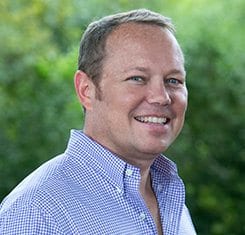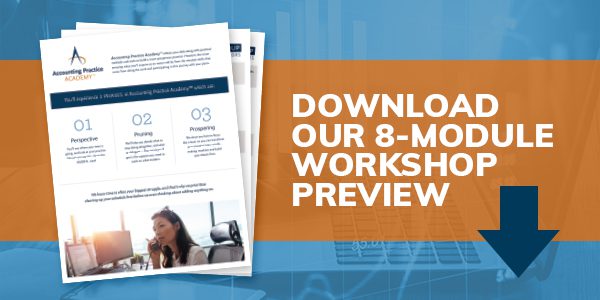1. Rule-of-thumb multiple: one times gross revenue?
This is a belief that permeates the accounting profession as strongly as anything we have seen.
It implies that accountants value practices with reference to annual gross revenues, which is different from the metrics used to value other businesses.
Almost all other businesses are valued based on a multiple of net cash flow to owner. Cash flow to owner is a broad category and includes net income plus things like owner salary, payroll taxes and benefits paid on behalf of the owner, depreciation and other owner discretionary expenses. For most businesses, that multiple is approximately 2.5 times cash flow to owner. The multiple for service businesses is less, more like 1.5 to 2 times cash flow to owner. Therefore, if accountants were like everyone else, we would value our businesses at 1.5 to 2 times cash flow to owner. But, we are different.
The reason is probably because owner cash flow is something that a buyer of an accounting practice will control. It can change significantly based on practice management. Sometimes this mindset hurts the value of a business where the cash flow is high. At other times, it helps the value, where the cash flow is low. This mindset can be used to either a seller’s or a buyer’s advantage. On other occasions, extra effort may be required to overcome it.
As you can certainly imagine, not all practices sell at one times gross fees. There are a host of factors that will make a practice sell for more or less than the simple rule of thumb. Of course, knowledge of those factors is a major help to pricing your practice accurately. An accurate price will bring in the most buyers, but avoid “leaving money on the table.”
2. Cash or Earnout?
“Twenty percent of collections each year for five years.” This is a common way practice owners who sell on their own structure their agreements. This typifies the mindset of many accountants who put all the risk in the deal on the seller and none on the buyer.
When many accountants say “one times annual gross revenues,” they mean “twenty percent of collections each year for five years.” But in many deals, this formula will net the seller FAR less in the end. In a worst-case scenario, this may be up to 50 percent less. There is no interest paid and, more importantly, by allowing the buyer to take too little financial stake in keeping clients, clients will be lost—in addition to the normal loss from natural attrition.
A much better scenario for the seller is to sell for all cash or cash equivalent upfront with no risk to the seller for client retention. We like to think of risk of client retention in terms of a continuum. On one end of the continuum (a structure based purely on an earn-out), all risk is on the seller. On the other end of the continuum (100 percent cash at closing), all risk is on the buyer. Our goal is to shift as much risk as possible to the buyer. Why? Because the buyer has the most control over client service and therefore the most control over whether or not clients will stay with the new owner.
There are many solutions that offer the buyer some comfort while ensuring that the seller is not taking all the risk. You do not need to sell on a pure earnout structure. Price and terms are influenced by how confident buyers are with the handling of transition. (Our process includes extensive coaching on client retention and effective transitioning tactics. Past clients have received exceptional value from our transition coaching.)
The important point to take from this is that when we say “one times gross” we mean a present value of one times gross that the seller will actually end up receiving. For a deeper dive on deal structure, please see our AICPA published column titled 5 Reasons to Avoid an Earnout when Selling Your Accounting Practice.
3. “Maximum potential buyers.”
If there are NO buyers, the practice is worth zero. This unfortunate reality is what the owners of some firms in extremely rural locations have to deal with when they are ready to retire. If you only have one or two buyers to deal with, the practice is not worth nearly as much as if you have 100 buyers. The best approach is to maximize the number of buyers in the mix. However, finding those 100 buyers requires time and marketing reach.
(Poe Group Advisors has a robust database of buyers and can help you rapidly evaluate them so you entertain only the most serious and qualified buyers.)
4. “Finding the right buyer.”
Each buyer will value your practice differently. The best match will be based on several factors such as risk tolerance, financial position, capacity for taking on more work, technical abilities, management style, and interpersonal skills. The key to getting the best deal is to talk with buyers who represent the best match.
Some sellers have the good fortune to already be acquainted with other firm owners who represent a good fit and who have the resources and the inclination to purchase their firm. However, it can be very difficult to negotiate with a single buyer. Spending time finding right-fit buyers can be a time-consuming distraction from continuing to maintain a healthy practice that is attractive to the market. Our recommendation if you are negotiating with a single buyer is to put time constraints on the negotiation period.
(We help sellers by gathering all of the buyer information to properly assess each buyer, and then help sift through and enter discussions with multiple buyers at once. For more information on buyer fit, download our “Seller’s Guide to Evaluating Buyers.”)
5. “Salable Value”
This is not an efficient market; that is, when compared to something like a stock exchange where thousands of transactions take place daily. The value of your practice cannot be accurately determined by a formula.
You may find two firms that are nearly identical in terms of gross revenue, service mix, cost structure, and cash flow to owner, but their saleable values may differ considerably. This can be due to differences in firm culture, location, use of technology, presence – or absence – of efficient systems and processes, or any of the hundreds of other ways that firms can differ from each other.
Instead of thinking in terms of “saleable value,” consider thinking in terms of “asking price.” Thinking in terms of asking price is extremely important because you do not want to leave anything on the table, but also you do not want to run away possible interest by appearing overpriced.
P.S. – Whenever you’re ready, here are 4 other ways we can help:
- Seller FAQ: Answers to the questions sellers are asking. From practice value, to timing, we’ve got you covered.
- Strategic Guide to Selling your CPA Practice Video: The how-to of selling a CPA firm.
- Accounting Practice Academy: If you’re looking for benchmarks, our 8-week workshop has a community of established firm owners that will help you get perspective, reduce your owner hours, and raise your bottom line. email ibrennan@poegroupadvisors.com with “APA” and we will fill you in on the details.
- If you want to chat about your exit strategy, email bball@poegroupadvisors.com with “strategy call” or request a call here.
Share this blog on:






